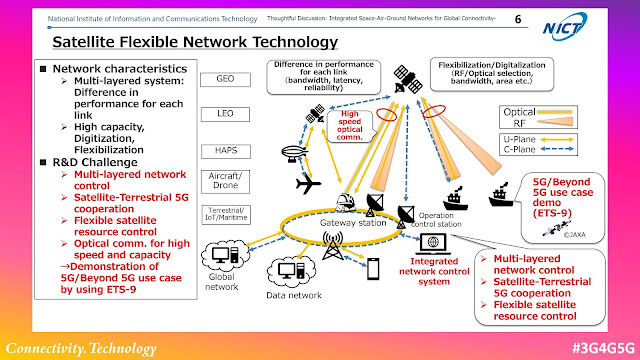National Institute of Information and Communications Technology (NICT) is Japan’s sole National Research and Development Agency specializing in the field of information and communications technology. It is charged with promoting ICT sector as well as research and development in ICT, which drives economic growth and creates an affluent, safe and secure society.
Free-space optical communications have the potential to bring the bandwidth of optical fibers to moving platforms, greatly enhancing their communication capabilities. This communication technology has already become mature after numerous demonstrations during the last few years.
Free-space laser communication is expected to play a key role to cope with the demanding bandwidth requirements of 5G (and beyond) networks to support an increasing number of wireless terminals disseminated throughout the world and generating an unprecedented amount of data. For this purpose, practical and versatile lasercom systems will be necessary to be developed and deployed in real scenarios as soon as possible.
With the goal of meeting the diverse requirements of many different types of platforms, ranging from small drones to big satellites, and being applied in a variety of diverse scenarios, ranging from fixed terrestrial links to moving platforms in general, and operating within a wide range of conditions and distances, NICT is currently working towards the development of a series of versatile miniaturized free-space laser-communication terminals.
By choosing the appropriate terminal configuration for any given scenario, the basic conditions of operations can be satisfied without the need of customization, and the adaptive design of the terminals can close the gap to achieve an optimum solution that meets the communication requirements. A paper presenting NICT`s current efforts regarding the development of this series of lasercom terminals and the first prototypes developed for validation and test purposes is available here.
The paper introduces the current efforts in NICT towards the development of a new series of miniaturized lasercom terminals with the goal of meeting the requirements of many different scenarios and platforms. The early prototypes of both terminals are shown, some key already-completed subsystems of the terminals are presented, and the basic characteristics of the final terminals are described. Lastly, the basic schedule as well as development and demonstration plans are briefly introduced.
Related Posts:
- Free 6G Training: NICT Japan's Beyond 5G and 6G Era Scenarios
- Connectivity Technology Blog: Laser Inter-Satellite Links (LISLs) in a Starlink Constellation
- Connectivity Technology Blog: Is LiFi (Light-Fidelity) Ready for Beyond-5G?
- Free 6G Training: ETRI Journal's Special issue on 6G and satellite communications
- Telecoms Infrastructure Blog: Free Space Optical Communications (FSOC) as an Alternative to Fiber Deployments



Comments
Post a Comment